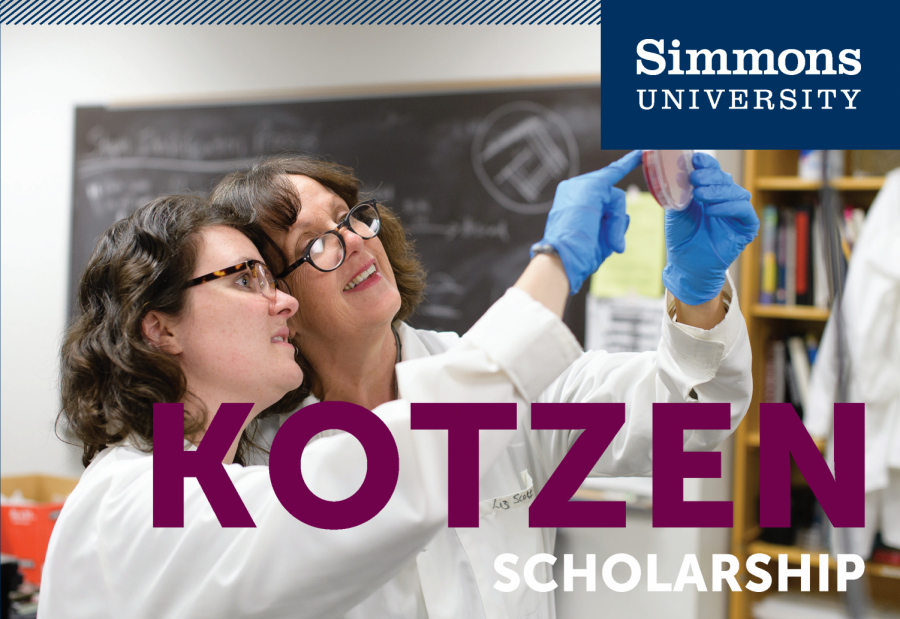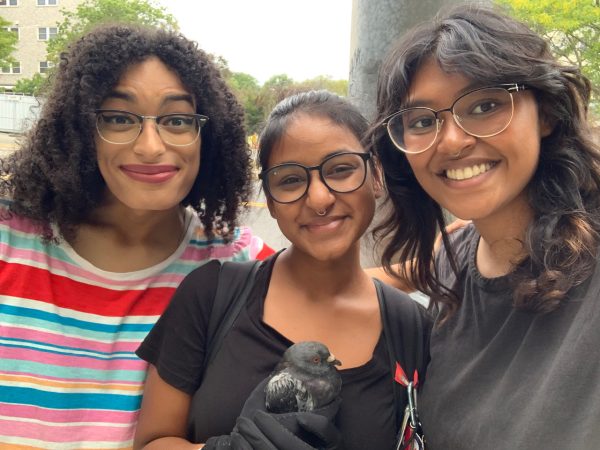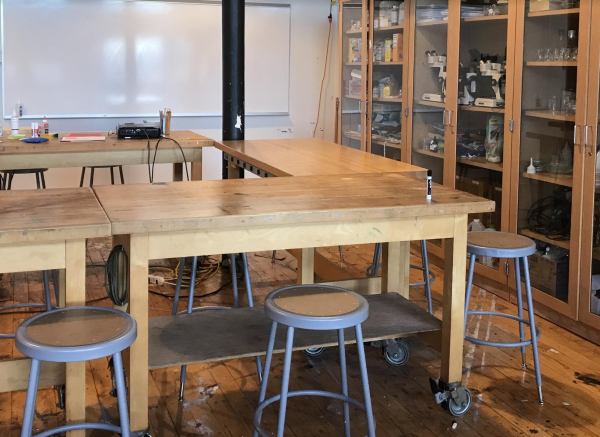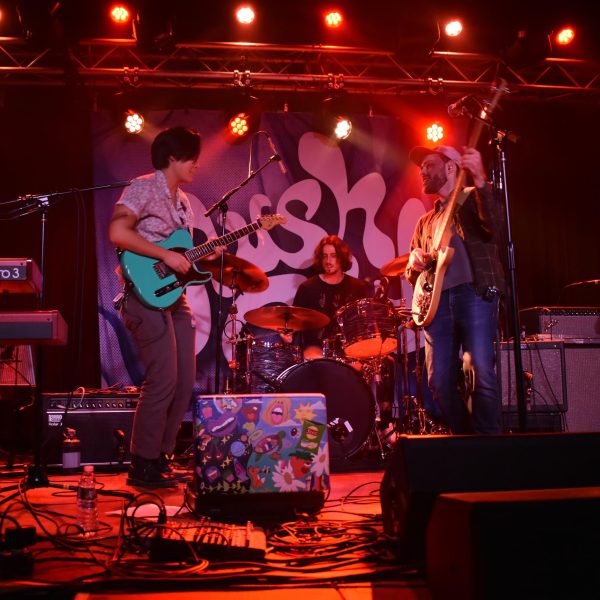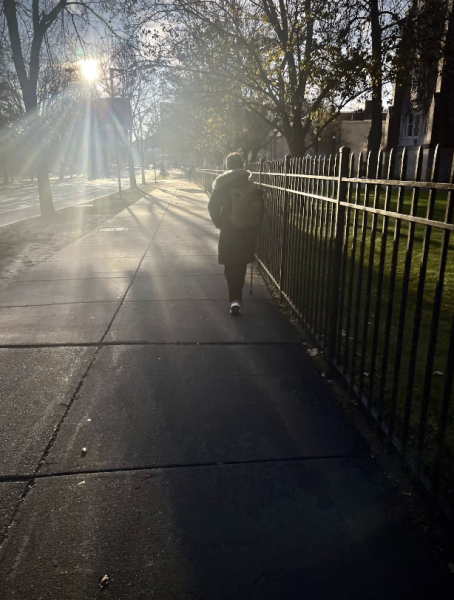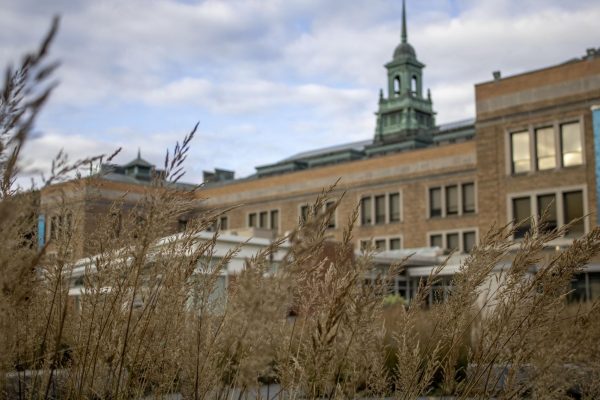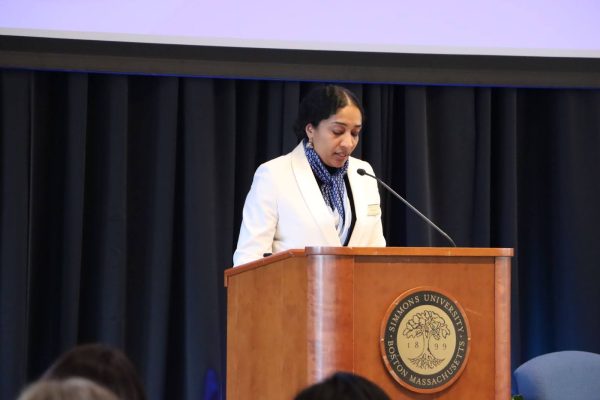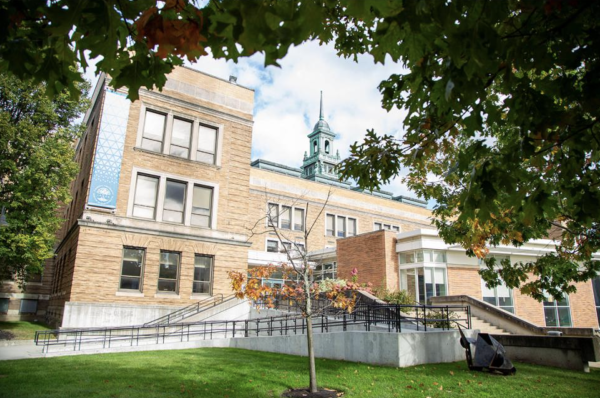The Kotzen scholarship knocks down barriers to a liberal arts education, but only for some
Simmons shows no sign of plans to use its full-ride scholarship to increase access to a college education
The Gilbert and Marcia Kotzen Scholarship has the potential to alter the trajectory of someone’s life. That’s according to Kaya Moon, a Simmons graduate from the class of 2020.
Every year, a select few students are awarded the Kotzen Scholarship, the merit scholarship at Simmons which fully covers tuition, room and board and mandatory fees excluding health insurance. It also provides an annual $3,000 stipend for study abroad, short-term courses, summer internships or research opportunities.
With such high benefits, the scholarship attracts a large pool of applicants. More than 530 people applied for the scholarship for the 2020-2021 academic year, according to data provided by Kate Innes, the director of Simmons Undergraduate Admissions. Over the past four years, only 3.98% of applicants were selected for the scholarship. Since 2017, the number of applicants has increased by nearly 42%.
This chart shows how the number of applicants, scholarships recipients, and enrolled Kotzen scholars has changed from 2017 to 2020.
As a purely merit scholarship, Innes says Admissions does not consider financial need when deciding who to award the scholarship to.
The scholarship was first funded in 2013 by Linda K. Paresky, Simmons alum and travel executive.
“My goal was to honor the memory of my parents while investing in a strategic priority for Simmons,” wrote Paresky in an email to The Voice. “Helen Drinan had a vision to raise our academic profile by attracting students who might otherwise go elsewhere. My contributions have followed that goal.”
Paresky’s note about starting the scholarship to benefit the institution by raising its academic profile differed from the Advancement team’s explanation, which focused on the educational experience of students.
Mallory McAninch, who works in the Stewardship and Donor Relations component of Advancement, told The Voice that Paresky, “wanted to make a cohort program for the most promising students at Simmons in order to ensure that they are able to receive a transformative experience at Simmons like she did.”
Regardless of Paresky’s intent for the scholarship, the benefits of the award are twofold according to current scholars and alums: students don’t have to worry about the cost of their education, and they have the resources to explore their interests outside of the classroom.
The ways in which scholars spend their stipend depends on their needs. While some use it to pay for typical college expenses, like books and equipment, others are able to have more freedom in their spending.
Sinai Sampson-Hill, a Kotzen scholar who graduated in 2017, emphasized that the scholarship gave her the ability to explore her interests without worrying about finances.
“It motivated me to put in that effort in college. It inspired me to seek more challenges,” said Sampson-Hill. The 2017 alumna explained that she took more academic risks outside of her major during college because of the scholarship and has had the flexibility to take jobs because of her interest in the work and not the salary after college because she isn’t burdened with student loans.
Sampson-Hill says the risks she took in her academics and the experiences she had through her stipend made her well-rounded for an arts administration job after college.
“The grants were life-changing honestly. I was able to travel multiple times. I was able to get the equipment I needed to do my work. I built a computer with my last round of money,” said Sampson-Hill.
Kimberly Calle, a sophomore nursing student, has already used her stipend to expand her education early in her college career.
As a first-year student, Calle traveled to Tucson, Arizona to volunteer at Casa Alitas, a Catholic community service organization that provides short term humanitarian aid to migrant families. There, she worked alongside doctors who provided medical care. Calle, who is bilingual, could also act as a translator for volunteers.
“It was rewarding to me because I was able to kind of be like comfort for them, like a sense of familiarity,” said Calle. She explained that most of the volunteers who spoke Spanish had learned it in school. “I’m bilingual and I look like them,” said Calle.
Saloni Kumar, a sophomore student and current Woman on Campus, says she used part of her stipend to develop a curriculum for a girl in Greece she tutors virtually. The money she used was for supplies and books for both her and the girl she tutored.
In the same academic year, Kumar says she donated a small portion of her stipend to an organization during her first year at Simmons. She “froze” the remainder of her stipend to use at a later time due to COVID-19.
Misbah Rindani, a junior nursing student, has used her stipend to pay for textbooks, travel and rent in Boston during the summer months.
Rindani says the stipend paid for her travel to Pakistan the summer after her first year at Simmons to shadow her aunt who works in a hospital. The trip confirmed to Rindani that she wants to pursue nursing. She says seeing how different health care systems work gave her a new perspective on health care in the U.S.
The next summer, Rindani used her stipend to pay for her housing while she worked at Children’s Hospital Boston as a care companion.
Emma Harrison, a junior biochemistry student, has used her stipend to present research abroad and explore her interests aside from STEM.
In her first year at Simmons, Harrison used her stipend to take a faculty-led travel course to Iceland. In her sophomore year, Harrison used her stipend to travel to Sweden with her chemistry and physics research group and present their work at a pollination conference.
Harrison says she did not have the money to pay for the conference fees and travel on her own, so the stipend enabled her to finance it stress-free. During the summer after her sophomore year, Harrison used her stipend to take a queer theory course and a course on the social impact of science.
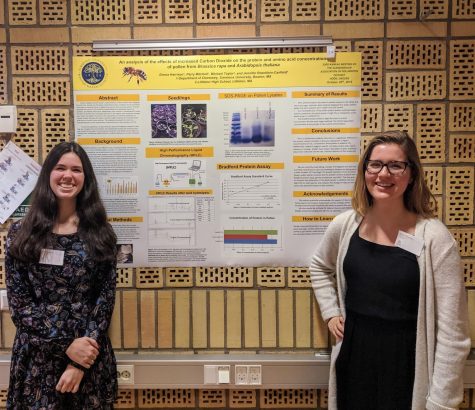
“The stipend has allowed me to take on some of those aspects of liberal arts education that I don’t quite always get as much being a STEM major at Simmons,” explained Harrison.
Without the scholarship and stipend, Harrison says the cost of college would have put her family in an entirely different financial situation.
“I have a little sister, and if we had both gone to small liberal arts colleges like Simmons, then my family would have been in quite a rough place,” said Harrison.
Kaya Moon, a class of 2020 alumna, expressed a similar sentiment about her liberal arts education experience. Moon studied computer science at Simmons and used her stipend to travel each year through faculty-led travel courses and study abroad programs.

Each of the aforementioned Kotzen scholars expressed their deepest gratitude for the scholarship and the opportunities it has provided to them during their time at Simmons. But there are things they would change about the scholarship.
When asked what they wished was different about the scholarship, several Kotzen scholars said that they wished financial need was considered during the scholarship’s application process.
“If possible, they should take need into account as well as merit,” said Harrison. “I know that there are a couple of Kotzen scholars who likely would have been able to still pursue all of the extracurriculars and things like that, that they are pursuing currently if they hadn’t gotten the scholarship. So I feel like the scholarship should exist so that people who would not have already had those opportunities available to them now have them available to them.”
Harrison also said she wishes the scholarship application was test-optional because she doesn’t think standardized tests reflect intelligence. The scholarship application is test-optional for the 2021-2022 academic year due to COVID-19. It’s unclear how the change will influence the scholarship’s applicant pool and cohort of selected recipients.
“Especially for people who don’t come from money, it makes such a big impact having the scholarship,” Moon said she wishes Simmons would prioritize students from lower-income families and students of color, especially Black students.
Moon says Simmons talks a lot about the importance of diversity, “but like if you’re not putting the money where your mouth is, then it doesn’t really make that much of a difference.”
When asked how the Kotzen scholarship fits into Simmons’ goal of becoming the most inclusive college in New England, Paresky wrote that she has been, “so pleased that the Admissions Department has selected a very diverse group of candidates for this scholarship.” She wrote that prior to the COVID-19 pandemic, she, “enjoyed meeting them in person and learning about their backgrounds and experiences.”
Currently, there are no indicators that Simmons will change the selection process for the scholarship.
When asked whether she thinks Simmons should or will ever make the change to consider both merit and need, Paresky wrote, “The original intention was to bring in students whose academic profile would benefit the Simmons community. Many Kotzen Scholars have told me that they would not have been able to attend without the scholarship.” She added that she is “acutely aware of the tremendous need for financial aid” and hopes “students and alums all support the Development Office’s work to raise more funds for the many deserving students who need more aid.”
Even though Admissions only considers merit during the application process, Innes says scholarship awardees become more diverse as the rest of Simmons does. More than half of the class of 2024 and 75% of Kotzen scholars in the class of 2024 self-identify as ALANA (Asian, Latinx, African, and Native American). Innes declined to say what percentage of total scholarship applicants self-identify as ALANA. She also declined to provide data for the first four years of the scholarship, 2013-2016.
Innes requested that The Voice use percentages to demonstrate the demographic breakdown of Kotzen scholars. The Voice declined to fulfill that request.
This chart shows how the number of Kotzen recipients, the number of enrolled Kotzen scholars, and the number of enrolled Kotzen scholars who self-identify as ALANA have changed from 2017 to 2020.
Although 8-12 Kotzen recipients enroll at Simmons every year, 4-9 applicants who were selected for the scholarship decline to accept it and enroll at different institutions. Innes declined to say how many of the applicants who were offered the scholarship and turned it down self-identified as ALANA.
It’s unclear how Paresky and Simmons define the school’s academic profile and measure its betterment. However, the ways in which Simmons evaluates applicants for the scholarship can provide some insight.
When looking at applications, Innes says her team looks for students who have stellar academics, are at the top of their class and are leaders outside of the classroom. At minimum, Innes says to be considered applicants must have an unweighted GPA of 3.3, an SAT score of 1300 and an ACT score of 28. Innes confirmed that admissions is aware of the identities of applicants during the selection process.
This chart shows the average GPA and ACT scores of Kotzen scholars at the time they enrolled at Simmons. SAT scores were left off of this chart because the data does not take into account how the structure and scoring of the test has changed.
In addition to meeting the minimum requirements, applicants must write and submit two essays.
When looking at applicants’ activity outside of the classroom, Innes says, “there’s no one type of student. They could be an athlete. They could be involved in community service.” She said Admissions looks for a student who is, “a real go getter” and has devoted themselves to a certain effort. It’s unclear how the different activities or efforts of applicants are compared to one another.
After reviewing every application, Innes says 20-25 applicants are invited to come to Simmons in February for an interview and to attend Accepted Students Day. Once interviews are complete, Innes says 12-19 students are informed they’ve been selected for the scholarship. Typically, 8-11 of those awardees accept the scholarship and choose to enroll at Simmons.
To attract applicants to the scholarship, Innes says Admissions relies on college fairs, brochures sent out to prospective students and high school guidance counselors. Several of the scholars said they learned about the scholarship on their own while actively looking for full-tuition scholarships during the college application process.
Pictured above is the brochure Simmons mails to prospective students and hands out at in-person events to attract scholarship applicants.
It’s clear that the scholarship provides students with the financial and intellectual freedom they need to find success during and after college, though it’s unclear what Simmons is doing to ensure those freedoms are given to students who would not otherwise have them.
As the most valuable and most competitive award Simmons has to offer, the Kotzen scholarship demonstrates who the University most wants to be a part of the student body. According to Paresky, those people are the ones who raise the University’s academic profile.
Opportunity Insights, a non-partisan, not-for-profit organization at Harvard University, found that the median family income of a Simmons student was $108,200 in 2017, and 49% of students came from the top 20% of earners in the U.S. When looking at how a Simmons education can change a student’s income bracket after college, researchers found that only 2.3% of students at Simmons who came from a poor family became a rich adult.
Even still, Simmons’ mobility index, or the likelihood that a student at Simmons moved up two or more income quintiles, was ranked seventh out of 76 colleges in Massachusetts.
According to the Jack Kent Cooke Foundation, an independent foundation dedicated to advancing the education of exceptionally promising students who have financial need, lower-income students have significantly less access to advanced learning opportunities than their higher income counterparts. This means low-income students often can’t access college-level courses, standardized tests prep courses or any other academic learning opportunities that students of higher-income backgrounds can access to better their applications.
Aside from academics, higher income students also have advantages in more ambiguous categories, like extracurricular activities and leadership. According to a study published in The Journal of Higher Education in September 2020, higher-income families are able to access extracurricular activities that create official, documentable achievements that are generally more accepted by admissions counselors.
According to the study, a similar problem occurs with other ambiguous application requirements, like essays. If a student is not familiar with how the evaluation process occurs for submission materials that do not have a numerical value tied to them, they may not submit an essay that gives admissions counselors what they’re looking for.
To create more opportunities for high achieving, lower-income students JKCF recommends that selective universities be mindful of a student’s financial background, look carefully for signs of academic aptitude, compare students to others from similar backgrounds, give low-income students who have reached high levels of academic achievement credit for overcoming the barriers of growing up in circumstances of financial need and train readers to review low-income applicants with sensitivity to their circumstances.
While Simmons shows no indication of changing the way they evaluate scholarship applicants, doing so could change the inclusivity and make-up of the student body. For a school publicly claiming it is working to be the most inclusive college in New England, it’s unclear why the Kotzen scholarship, which breaks down the barriers to a true liberal arts education, has not been included in those efforts.



